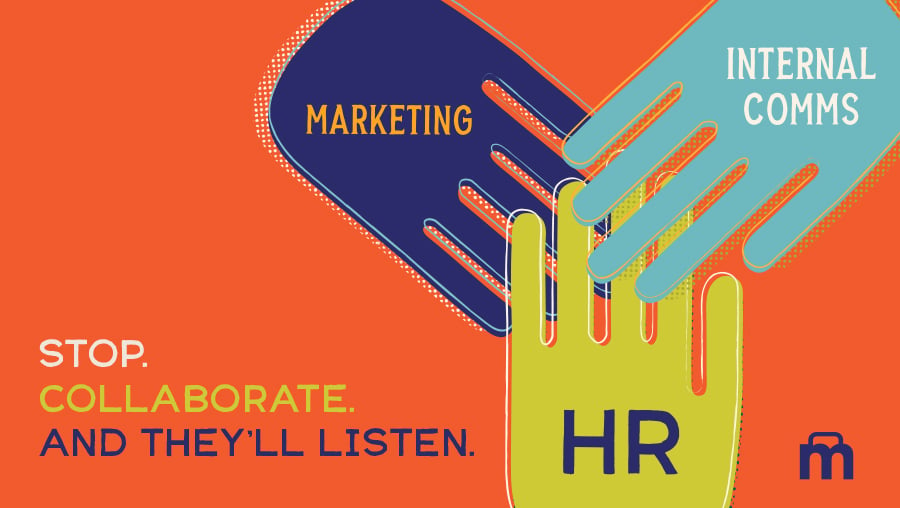
As passionate as we are about employment branding to improve retention and recruiting, it’s easy to forget not everyone sees the work as an absolute and obvious slam-dunk. What comes as second nature to your organization’s marketing, HR and internal communications departments might seem alien to some, especially those at or near the top of the org chart.
So how does a passionate team, looking to improve a company’s reputation as an employer, convince a CEO, board of directors, or investor that the work is worth doing? How do we prove it will produce results? That it will lead to incredible ROI?
At MindHandle, we’ve found there’s really only one way to engage a CEO in the decision to build an employment brand. To bring HR, marketing and internal communications together with a business case and a plan.
Build Your Case for Employment Branding
- Find the Anchors in the Business Strategy. Consider what your company’s CEO and investors have said they want to see in the organization as it grows. Keep your point of view fixed on the future. On the business plan, is there a strategic initiative called “to be an employer of choice” (or similar)? Maybe “to build and promote our culture” or “to be the best place to work in [category]”? If so, that’s your anchor. Make that the title of your business case.
- State the Pain. Your audience “can’t taste the sweet without the salt,” so lay out the situation clearly and directly, and don’t shy away from naming the problem. Provide relevant stats to back it up. Some examples:
- “This year, our time-to-hire has increased by 20% and regrettable attrition has grown by 10%. We have 800 open positions, and if we don’t start filling them faster, with better values-aligned candidates, we risk falling short of the rest of our goals.”
- “We've been growing quickly. 48% of our employees are now less than 1 year in their roles. We need to make sure that the mission, vision, and values that got us here stay top-of-mind in this new generation of talent.”
- “Our regrettable attrition percentage is trending higher than this time last year. We need to diagnose the issue quickly to understand why our best people are leaving and where they are going. The cost to replace one director is anywhere between $65,000 - $200,000 which directly affects our profit line.
- Back it Up. Provide pertinent background information. Share data, but weave it into a story. For example: “Sherri from Payroll represents a growing class of employees – now 25% of our workforce – who need flexibility because her situation at home has changed in the last 2 years. But our practices aren’t keeping up with her requirements and she didn’t understand the way these policies were communicated. Regretfully, Sherri had to resign last week.”
- Set the Room on Fire. Land on a clear assessment and recommendation. “We say we want to be [at goal], but in fact we have a ways to go. That’s why we should do [action].” Depending on the urgency, consider attaching a “by-when” date to your plan. If you don’t include it, we recommend at least having it in your back pocket to answer when the question arises.
- Paint a Picture of Action. Lay out the high-level plan to achieve the advantage as an employer. This may include:
- Brand audit and development
- Candidate experience audit
- Competitive research
- EVP testing and building
- Channel audit and communications strategy
- Employment brand campaign development
- Collaborate. Most importantly, don’t do this alone. Whether you represent marketing, HR or internal communications, come together as a single team and be prepared to describe how you’re each lending your unique perspectives and resources to the initiative.
While we can’t guarantee the above approach will sell in the program, we can 100% guarantee it will get you and your team started on what eventually will. Getting the wheels turning is usually the most difficult part.
So, what are you waiting for? Tilt that team into downhill momentum. Use this approach to create a framework that gets people talking about the changes they want to see in the talent within the business. And when you have a strong case ready, don’t sit on it. Act!
Whether you’re looking for more proven frameworks, an outsider’s lens, or some examples of employment branding in action, MindHandle is here to help. If your next step is deciding whether to do the work in-house or hire an agency, we have a tool for that too. Download the checklist.

